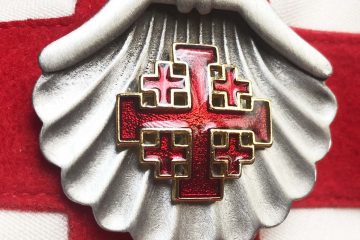Evangelization faces challenge from Cubans who syncretize religion
March 30, 2012
By Wallice J. de la Vega, Catholic News Service
SANTIAGO DE CUBA, Cuba (CNS) – In this Caribbean nation of 11.3 million, one of the greatest challenges to Catholic evangelization comes from Cubans who practice traditional African religions.
The fusion of diverse spiritual currents was occurring even before the Catholic Church began expanding throughout the world. When colonizers brought Christianity to the New World, it was expected that other religious systems would adhere to the mother church.
In recent decades, however, the church’s vision on this matter has been adjusted. The new approach has been inculturation of local populations. It is a process of welcoming traditional popular religious expressions and focusing on a gradual transition toward full communion via evangelization.
In Cuba, this syncretism of mostly animist African religions mixed with mainstream Catholicism is popular, said Jesuit Father Juan Rovira, who considers himself an “avid student” of popular devotion.
“The only real contact we have with them is when they come to church,” said Father Rovira, pastor of Holy Family Parish is Santiago de Cuba.
He told Catholic News Service March 29 that most popular devotees come to see him only when they need baptisms, funerals and a few other services. But he also said that some of them are very much in contact with priests. Most are required to be baptized in the Catholic Church before they can be baptized in their syncretic groups, he added.
When Pope Benedict XVI visited Santiago de Cuba March 26-27, some Cubans wore traditional African attire.
“Those seen at the papal events in their particular dress most likely were not there out of piety,” said Father Rovira. “So, I doubt the visit had any noticeable impact on them.”
He said Santeria, which identifies Catholic saints with African deities, is more openly seen in Havana. His last stay at the capital city coincided with the round-the-island pilgrimage of an image of Our Lady of Charity of El Cobre, Cuba’s patroness.
“I spent close to seven hours working the blessing lines, and many of the participants were clearly ‘santeros’ (Santeria members), wearing their garb, multicolored beaded necklaces, and all,” he remarked.
Father Raul Rodriguez Dago, a lecturer on Afro-Cuban religions at San Carlos and San Ambrosio Seminary in Havana and author of “El Santero Cubano,” considers syncretic devotees a large part of the Cuban Catholic Church.
About their status, he states: “Evangelization must be based on respect and should consider their values in order to open them to the Gospel with patience and perseverance, taking into account their degree of closeness to the church.”
Father Rodriguez’s position has been widely supported by the Catholic Church.
For example, the final document of the Puebla Conference, held in Mexico in 1979, states: “The Latin American peoples’ religion, in its most characteristic cultural form, is an expression of the Catholic faith. It is a popular Catholicism.”
Several other documents released since then, although recognizing popular devotion, also have pressed for stronger evangelization efforts. These include the final document from the 1986 national Cuban church encounter in Havana, Pope John Paul’s 1988 statement during the Cuban bishops’ “ad limina” visit, and his 1999 “Ecclesia in America” apostolic exhortation.
However, Father Rovira explained that evangelization among syncretic devotees has been very difficult.
“This type of effort is a ‘pending task’ for us,” he said. “These are small cells of unknown levels of relationship among themselves and with the church,” and spread across the country.
Asked why people need to combine different types of religions, Father Rovira explained: “It is said they have concrete problems in life for which they find no church solutions.”
Those solutions might be based on known practices of divination, supposed communication with deceased relatives, and even the attempted manipulation of the forces of nature.













